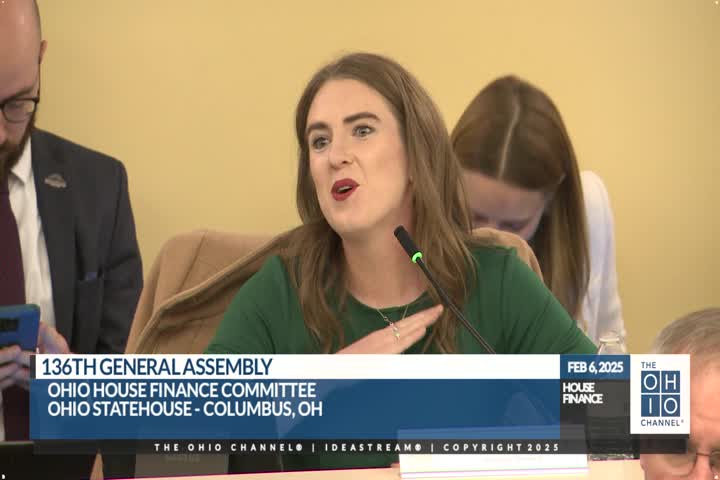Ohio lawmakers address funding gaps for economically disadvantaged students in education
February 06, 2025 | Finance, House of Representatives, Committees, Legislative, Ohio
This article was created by AI summarizing key points discussed. AI makes mistakes, so for full details and context, please refer to the video of the full meeting. Please report any errors so we can fix them. Report an error »

The Ohio House Finance Committee convened on February 6, 2025, to discuss critical issues surrounding funding for economically disadvantaged students and workforce readiness initiatives. The meeting highlighted significant concerns regarding the current funding formula and its impact on school districts with high populations of economically disadvantaged students.
A key point raised during the meeting was the disparity in funding for economically disadvantaged students. It was noted that while national studies suggest that additional funding should be between 30% to 50% above base costs, the state is currently providing only about 28%. This shortfall has led to many districts, regardless of political affiliation, experiencing financial losses despite serving higher numbers of economically disadvantaged students. Committee members expressed the urgent need to address this issue and proposed a reevaluation of the funding calculations to ensure that resources are effectively allocated to those who need them most.
The discussion also touched on the implications of recent federal changes that have affected how economically disadvantaged students are counted. For instance, the increase in schools providing universal access to lunch has resulted in inflated numbers of students classified as economically disadvantaged. This misclassification has further complicated funding allocations, with some districts receiving less support than in previous years despite having a higher true rate of disadvantaged students.
In addition to funding concerns, the committee examined the importance of workforce readiness programs. Members emphasized the need for better coordination between various state departments to enhance these programs. While significant investments have been made in workforce readiness initiatives, regulatory constraints from the Ohio Facilities Construction Commission were identified as barriers to effective program implementation at the school level.
The committee plans to continue discussions on these topics, with a focus on ensuring that funding mechanisms are adjusted to better serve economically disadvantaged students and that workforce readiness programs are effectively integrated into school curricula. The outcomes of these discussions will be crucial in shaping future educational policies in Ohio.
A key point raised during the meeting was the disparity in funding for economically disadvantaged students. It was noted that while national studies suggest that additional funding should be between 30% to 50% above base costs, the state is currently providing only about 28%. This shortfall has led to many districts, regardless of political affiliation, experiencing financial losses despite serving higher numbers of economically disadvantaged students. Committee members expressed the urgent need to address this issue and proposed a reevaluation of the funding calculations to ensure that resources are effectively allocated to those who need them most.
The discussion also touched on the implications of recent federal changes that have affected how economically disadvantaged students are counted. For instance, the increase in schools providing universal access to lunch has resulted in inflated numbers of students classified as economically disadvantaged. This misclassification has further complicated funding allocations, with some districts receiving less support than in previous years despite having a higher true rate of disadvantaged students.
In addition to funding concerns, the committee examined the importance of workforce readiness programs. Members emphasized the need for better coordination between various state departments to enhance these programs. While significant investments have been made in workforce readiness initiatives, regulatory constraints from the Ohio Facilities Construction Commission were identified as barriers to effective program implementation at the school level.
The committee plans to continue discussions on these topics, with a focus on ensuring that funding mechanisms are adjusted to better serve economically disadvantaged students and that workforce readiness programs are effectively integrated into school curricula. The outcomes of these discussions will be crucial in shaping future educational policies in Ohio.
View full meeting
This article is based on a recent meeting—watch the full video and explore the complete transcript for deeper insights into the discussion.
View full meeting
